The dazzling white cliffs of Sarakiniko Beach mercilessly reflect every ray of sunlight and burn everything around them. The nickname “lunar landscape” that this place bears is not accidental. Sarakiniko is largely desert. An unearthly beautiful white desert of volcanic rocks, in which the sea and nature have carved bizarre caves.
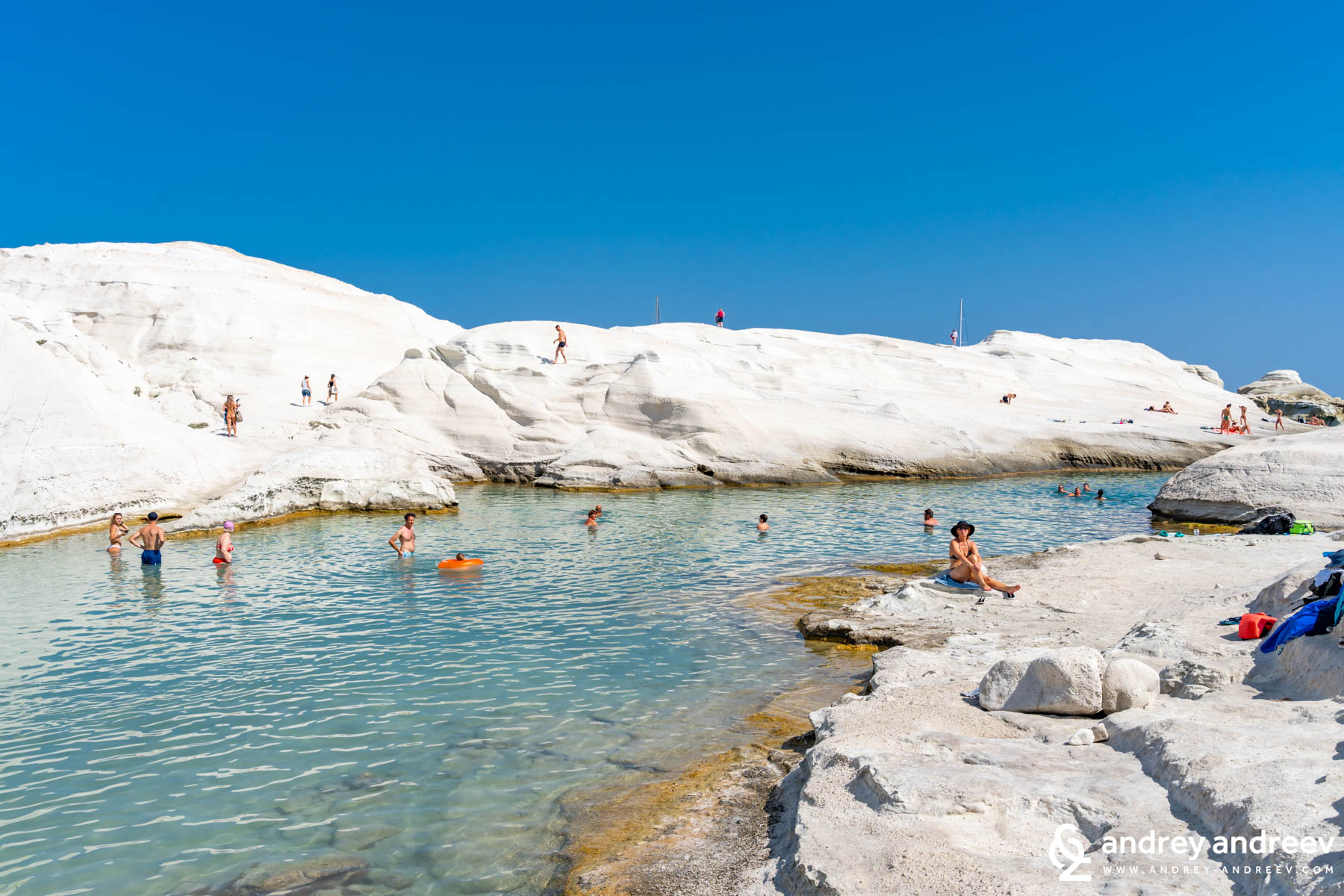
Milos, however, keeps a dynamic history. Tourists started coming here late, because the locals have had another livelihood for millennia – the mines. Milos has also been a military base of strategic importance during various periods. And the huge Christian catacombs and the world-famous Venus de Milo statue only support the assumptions that Milos was once a lively and very dynamic place.

Milos hides many secrets and in the early July morning we approach it with the ship to discover it. In fact, we are among the few lucky people who have the chance to visit Milos “the easy way” – by cruise ship . And while we wait for the lifeboats to take us to land (there is no big port here), we admire from afar the small white towns scattered on one half of the island and the wild nature on the other half.

A step back in time
As we travel with the kids to the small port of Adamas, we wonder what the “Step back in time” excursion includes. We are not very prepared with the history of Milos, but even if we were, Greece can always surprise us. It’s amazing how in this country they mix history, mythology, culture, food and wine. Sometimes we think that Zeus and the company from Olympus were actual characters.
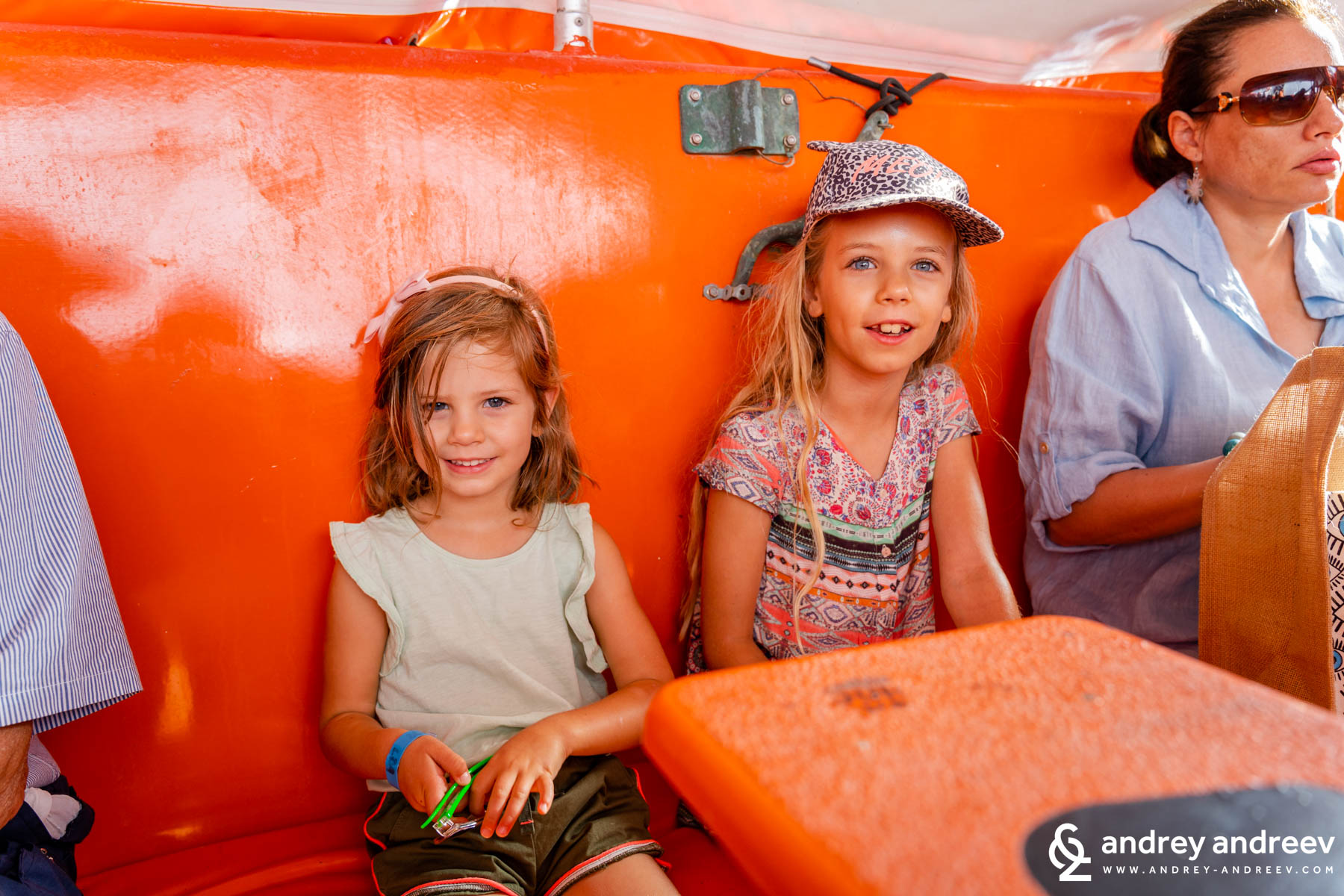
The Mining Museum
Our first stop is the mining museum. As soon as we entered, we understood why this place was a must-visit. Mines have been the heart of life and prosperity of Milos for millennia. 7,000 years ago the ancient inhabitants here mined the precious mineral obsidian, from which they made knives, tools and weapons. Trade with the other islands flourished and Milos was a rich and developed place. In the following millennia, the industry developed with the extraction of sulfur, kaolin and a number of other minerals.
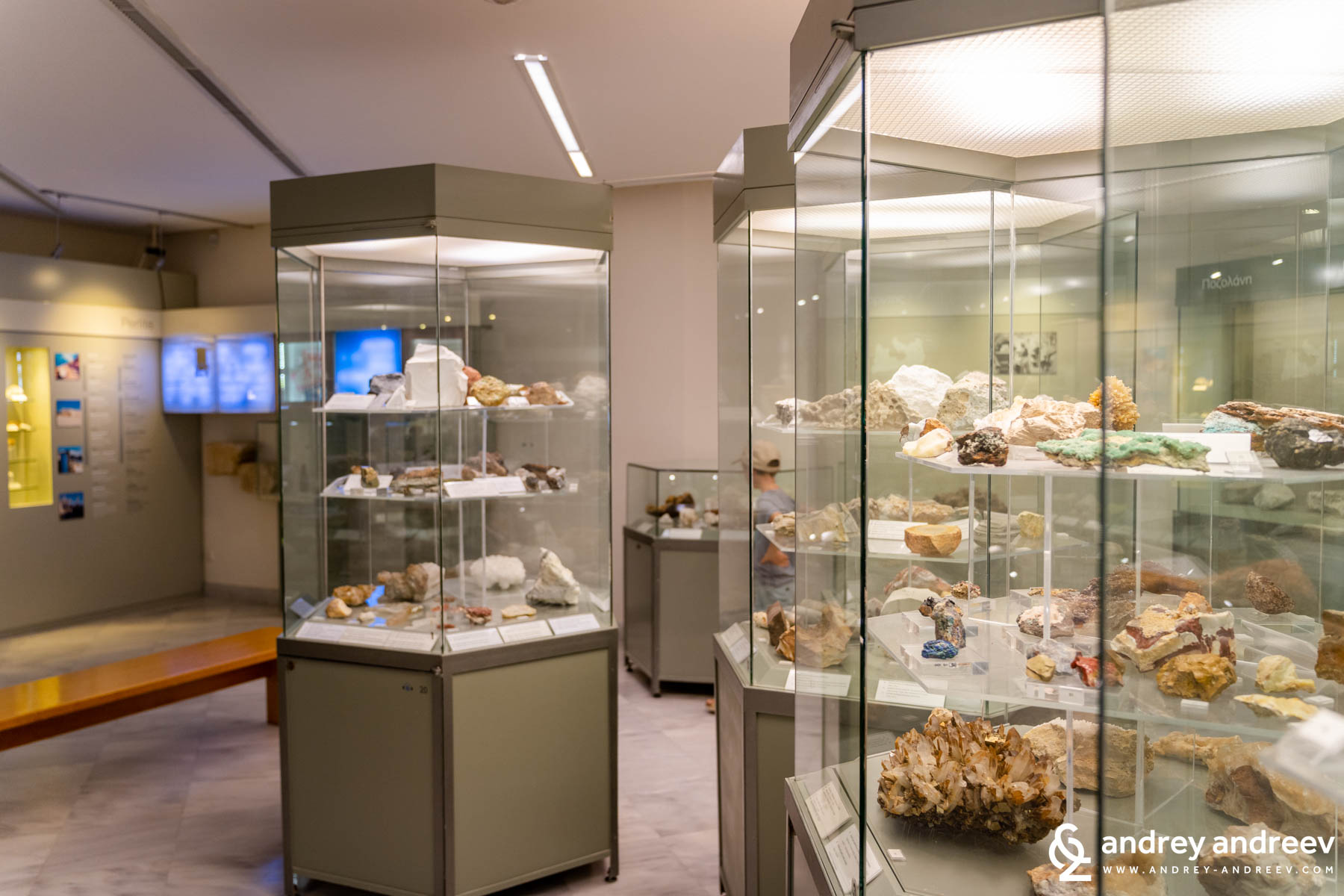
Nowadays bentonite and perlite are mainly mined. But much of the old mines are visible and accessible. The museum itself, to our surprise, turned out to be extremely attractive for children. So if you’re with yours, bring them in.
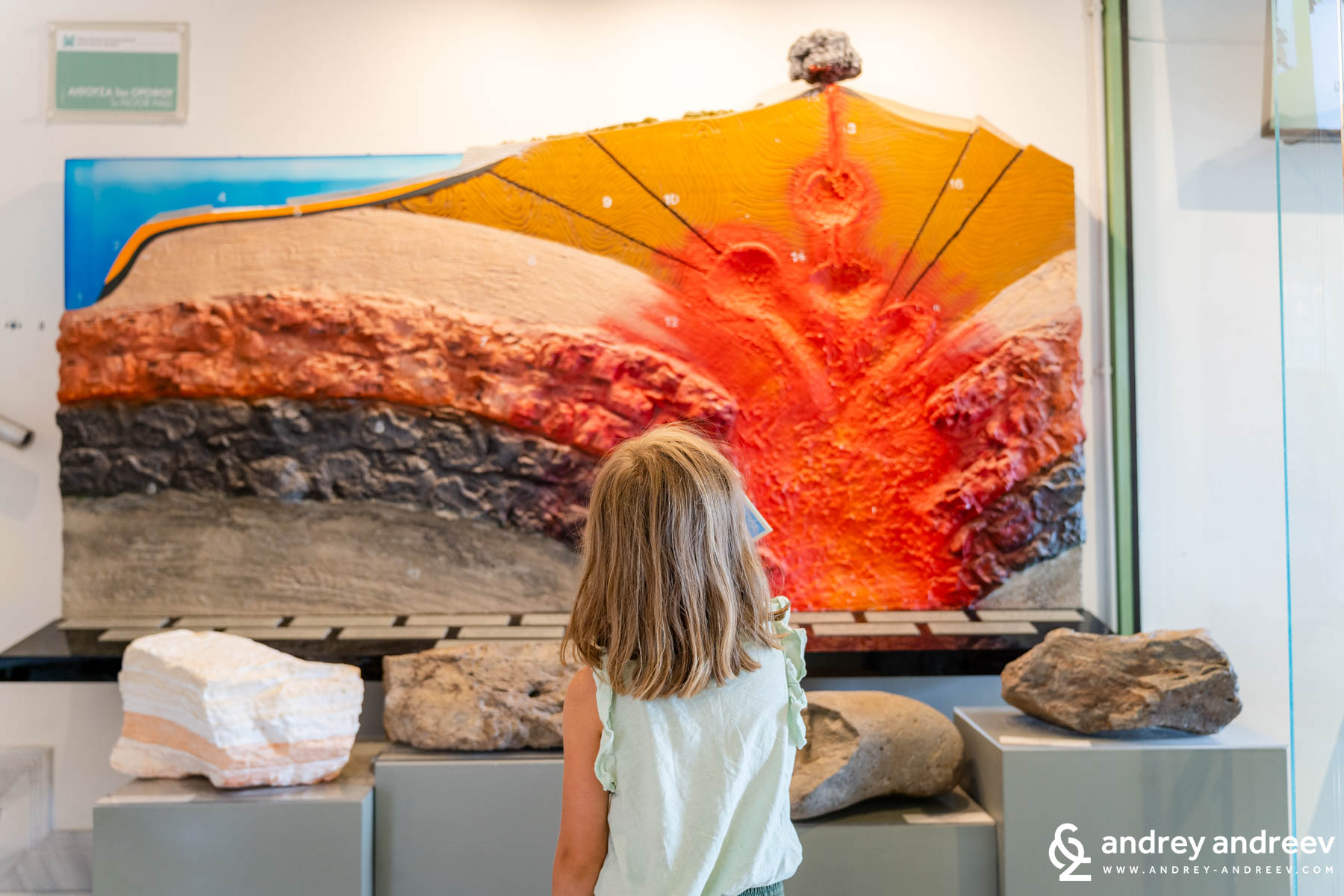
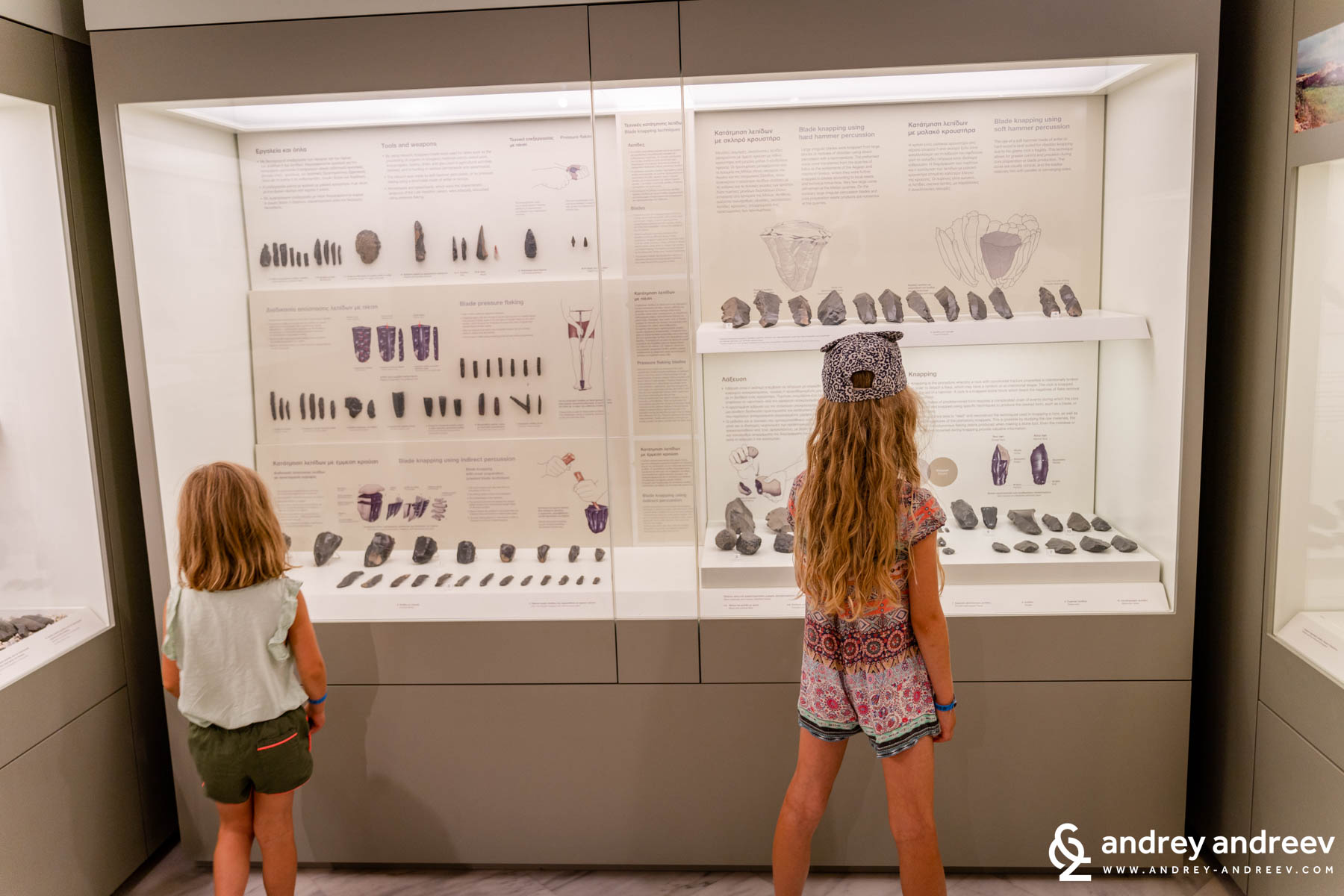
Sarakiniko Beach – the white lunar desert
The island of Milos has very special energy. Friendly and organized for tourists, but wild in its own way and far calmer than the famous “pearls” such as Santorini and Mykonos. The narrow roads wind along the hills, surrounded by wild vegetation and scattered villages here and there. There are also archeological sites, as well as old mines, which are both interesting to visit.
As our bus meandered along the narrow roads to show us a quick glimpse of some of the island’s sights, Milos continued to amuse us. And finally we reached The Place – Sarakiniko Beach.

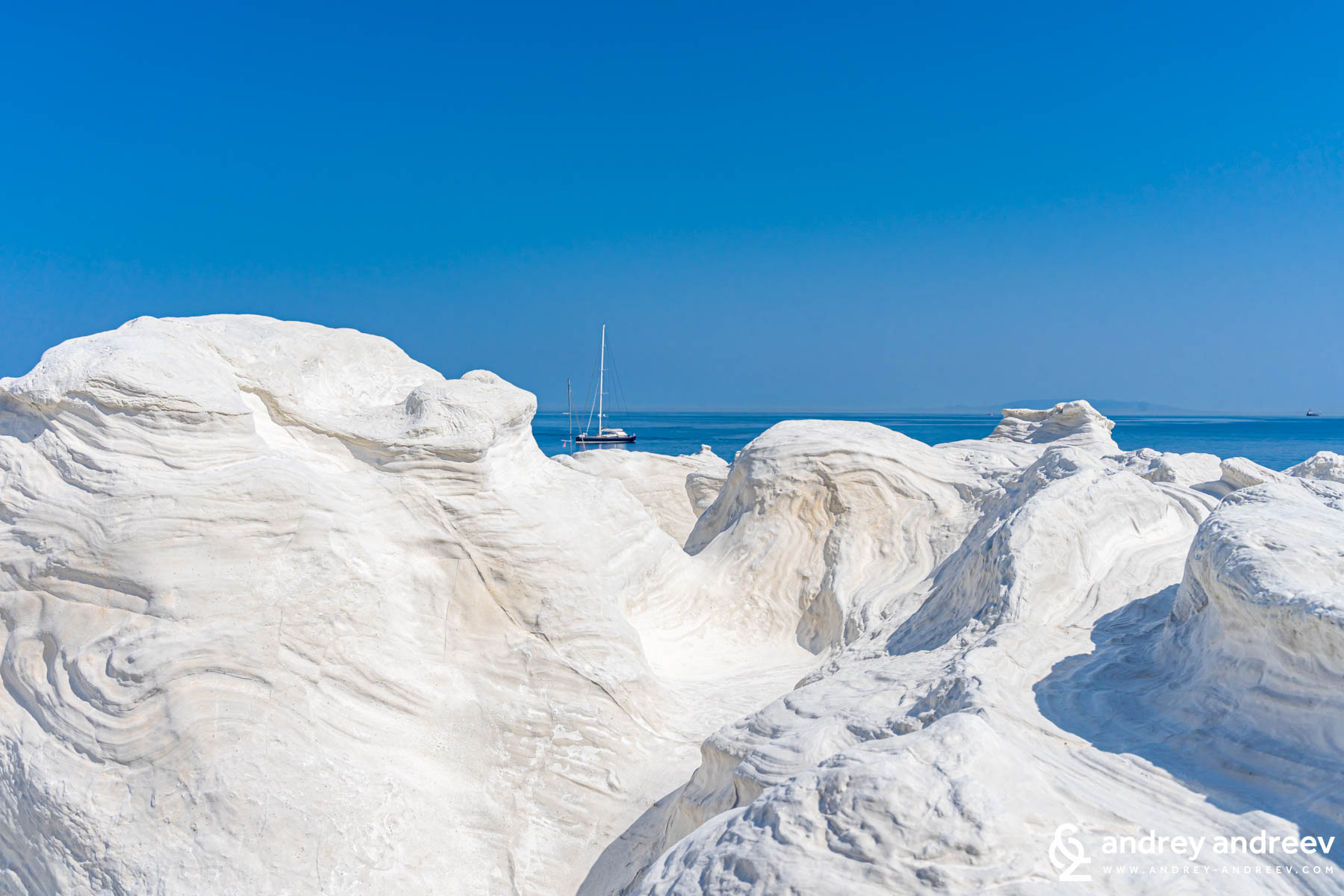
You will read about Sarakiniko that it feels like landing on the Moon. A dazzling white rocky desert where the sea has sculpted bizarre figures and caves. A couple who dance a millennial dance so skillfully and beautifully that you just stop to look. And take a bath if you have time.
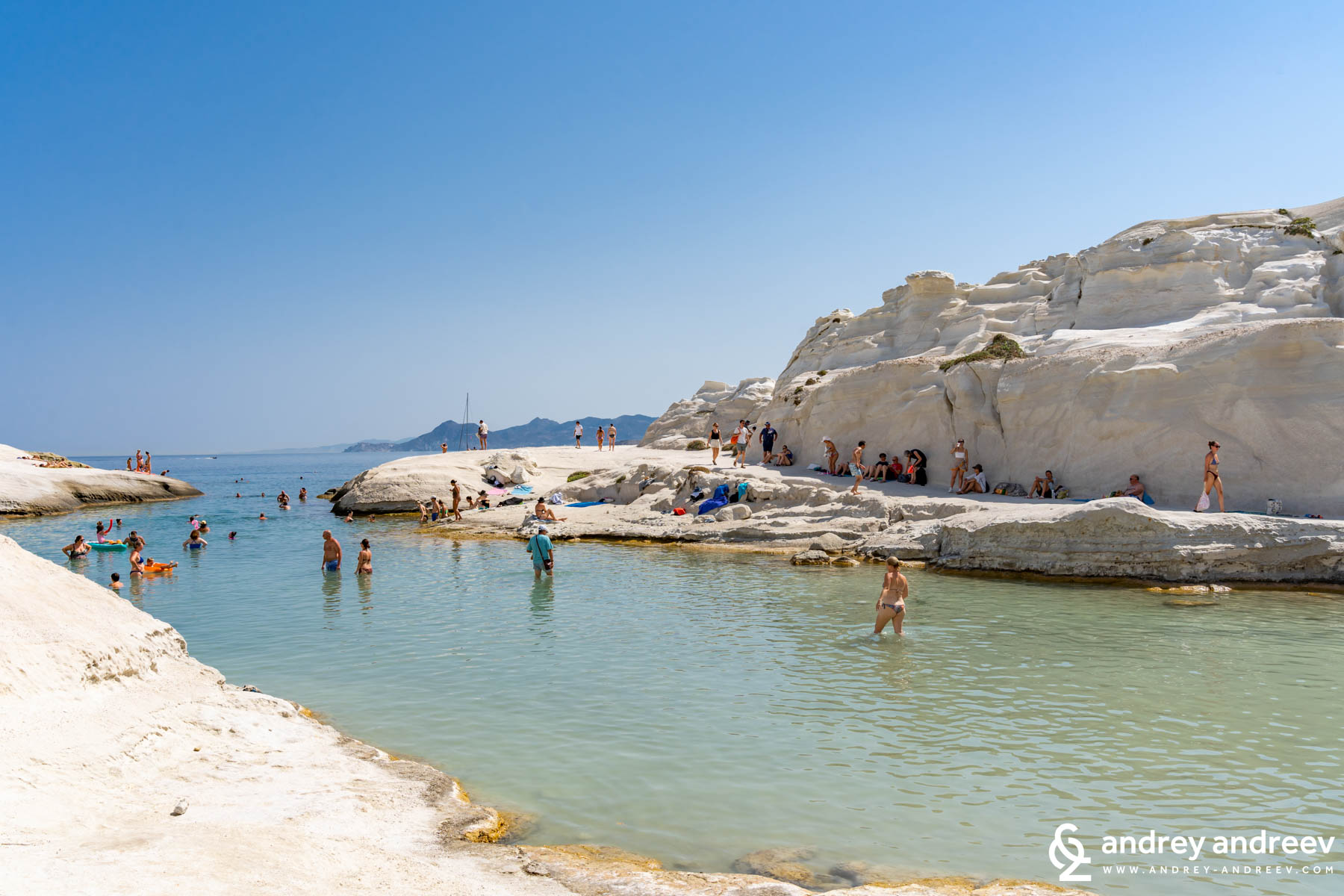

How to get to Sarakiniko Beach? The place is quite close to Adamas port, we got there by a bus organized by the ship, but there is also regular public transport from Adamas.
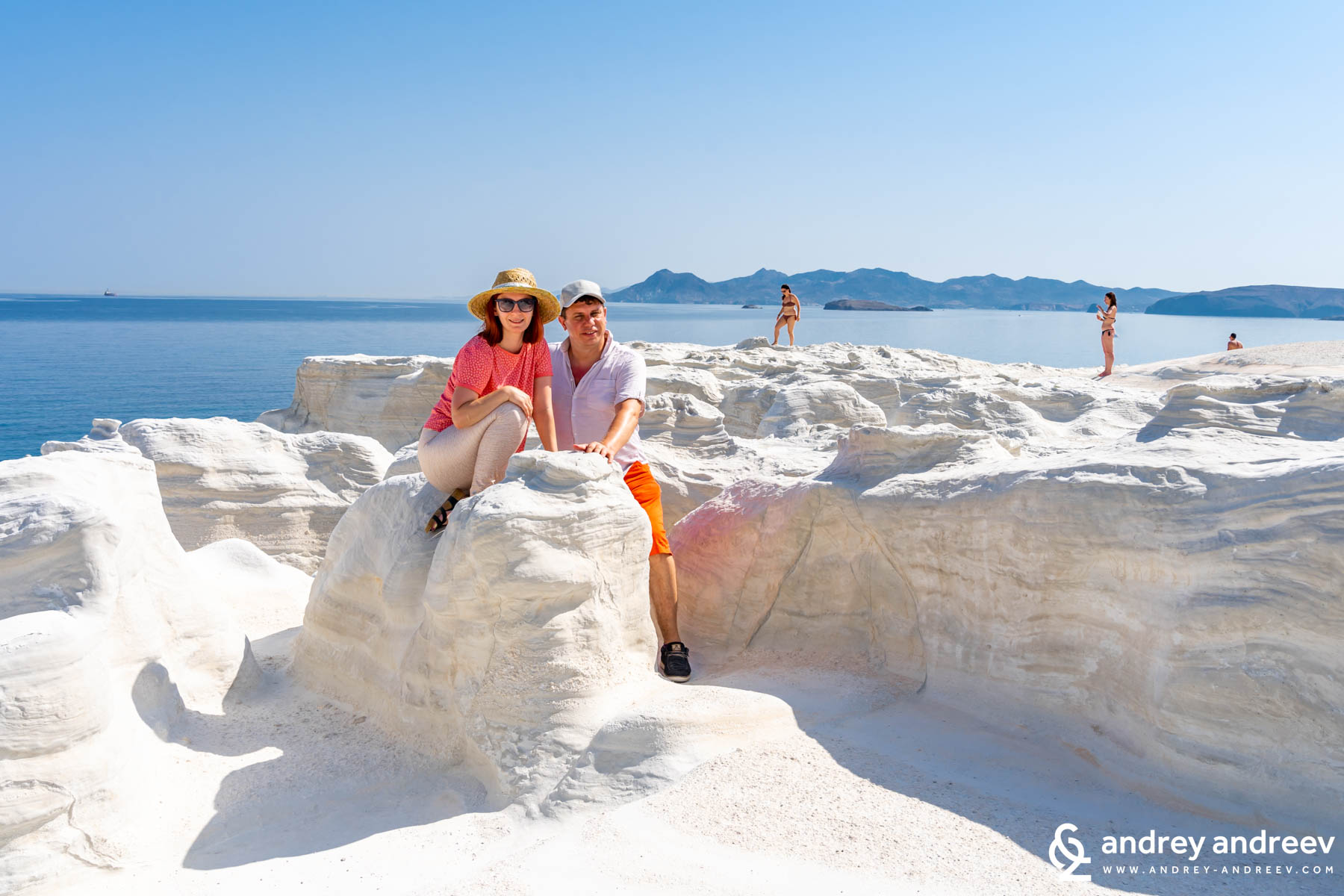
Plaka village
Plaka is looking like one of those countless postcards with cobbled streets, whitewashed houses with blue windows and all kinds of decorations hanging from them. Sometimes you think it’s too good to be true, but it is actually real.
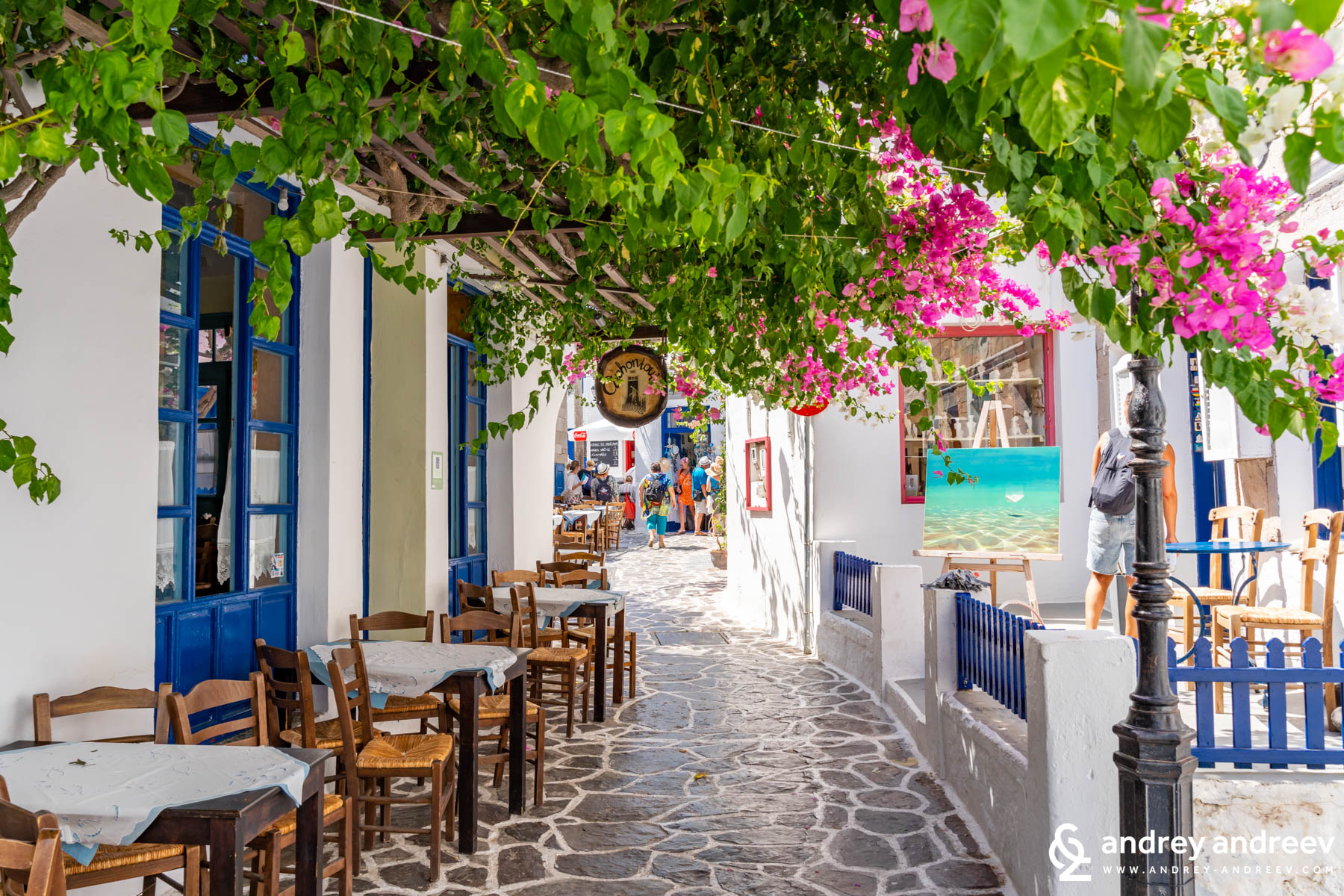
In the middle of the day the village is quiet. We look from the terrace of the church to see the sea and almost the whole island.
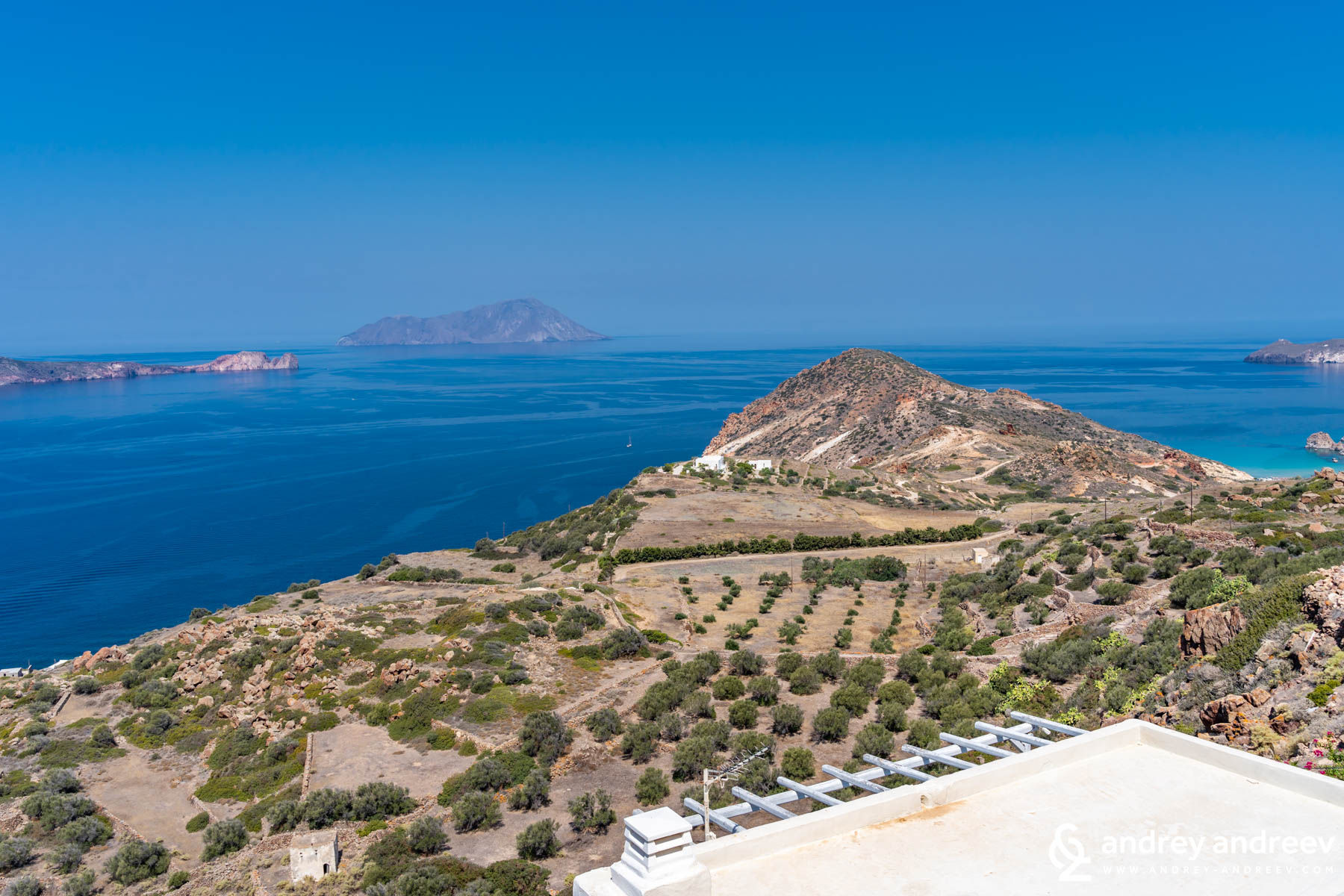
We have very limited time for a walk, but we quickly discover the pastry shop and the ice creams, which turn out to be wonderful.

In terms of food, cheeses and pasta with cheese are popular on Milos. There is also one winery on the island, and the wines are aged in rock caves.
The town of Plaka is the administrative capital of the island. We didn’t find a strong administrative spirit to be honest, but we had a lovely walk and would come again.

Venus de Milo and other discoveries
Milos turned out to be an island with a very rich history, spanning through several different civilizations. Back in the Neolithic, obsidian mining helped the islanders to develop much faster and more successfully than their neighbors on nearby islands. In the Bronze Age, it became the cultural center of the Cyclades. The then capital Philakopi is now an unearthed archaeological site. Then the island was conquered by the Mycenaean civilization. At some point, the Dorians came, who moved from Sparta. The Hellenistic period, mainly under Macedonian rule, was a peaceful time in which art and culture flourished. The famous Venus de Milo statue is from this period. It is believed to depict the Greek goddess of love, Aphrodite. During our tour we visited the site where it was discovered in 1820.

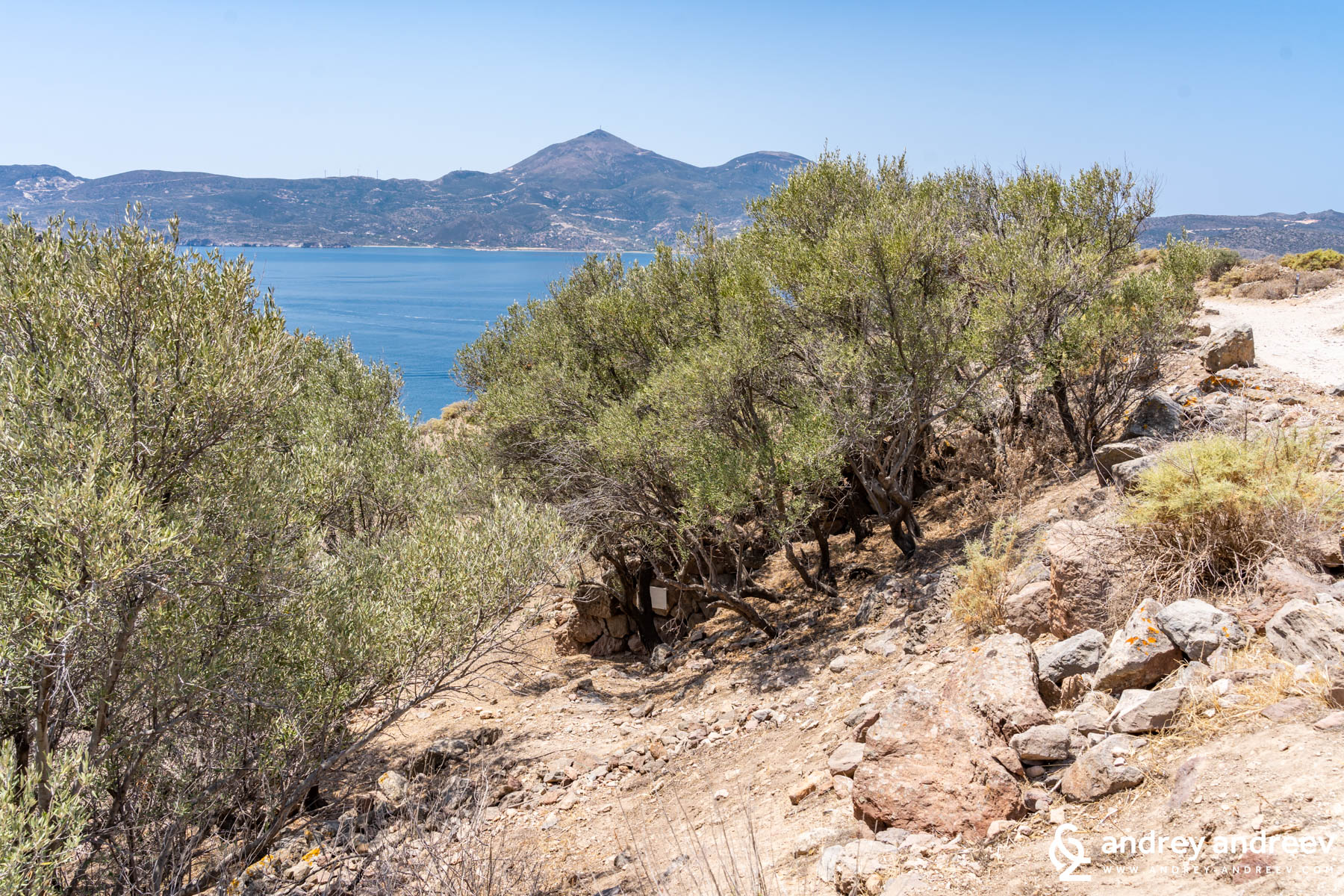
The story of the island, however, does not end here. The next period in the sequence is the Roman period – again a calm time for creation, during which temples, theaters, etc. were built. The Christian period after them also left a large-scale legacy – a huge labyrinth of catacombs occupying almost the entire interior of a hill, where almost 300 graves were discovered, guarding the remains of almost 8,000 people. Milos was a strategic point during the Middle Ages, during the Ottoman period, and during the two world wars.
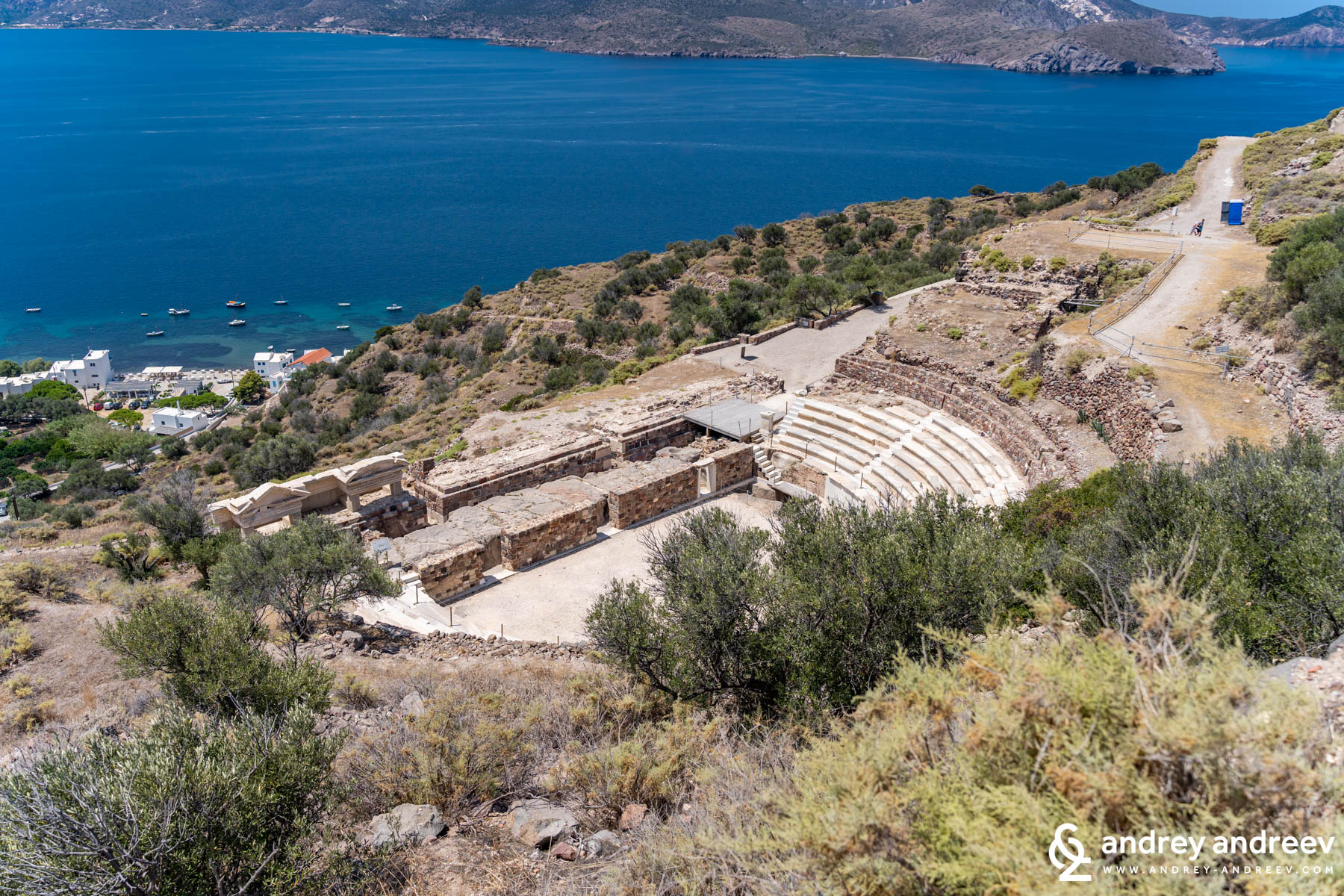
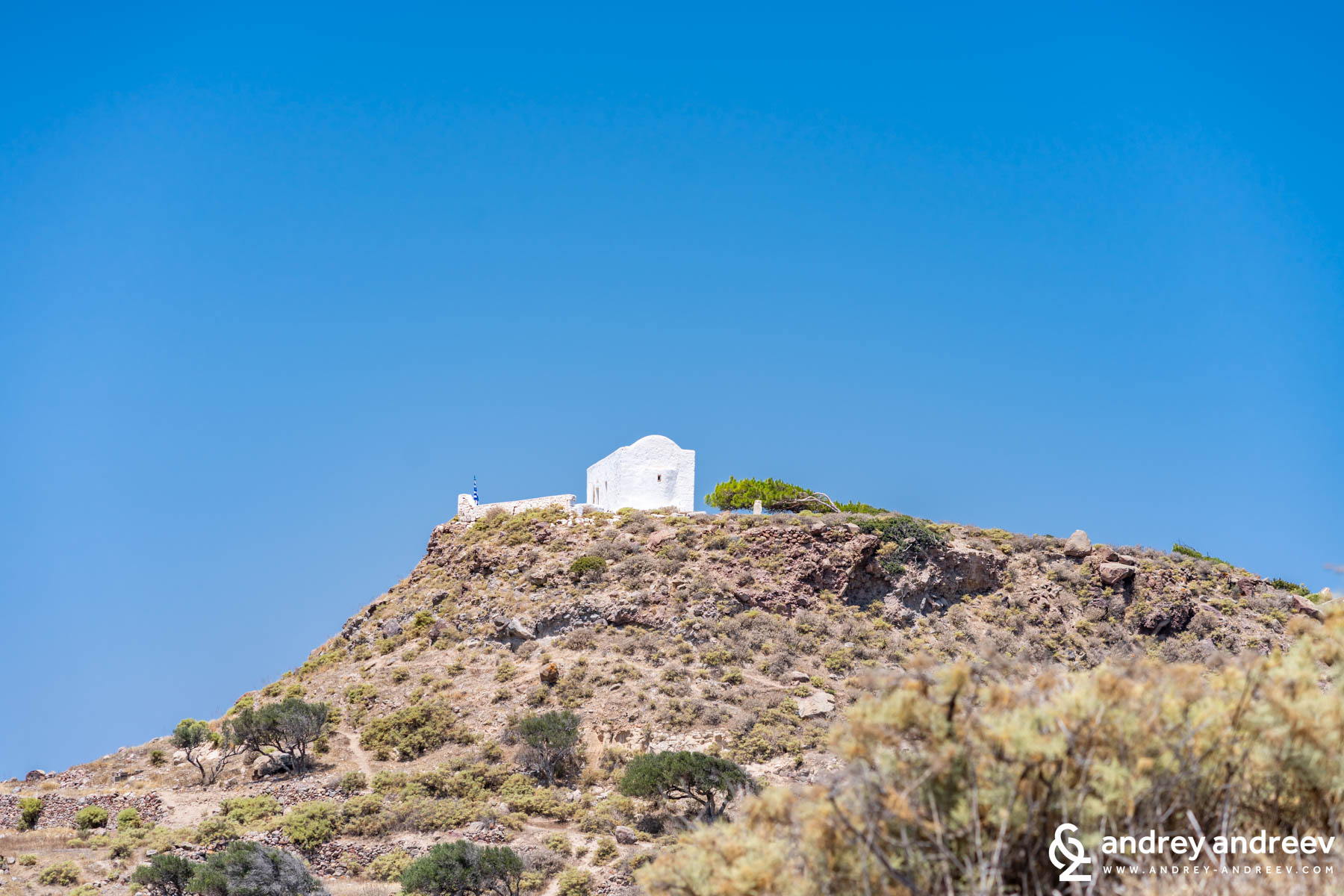
Milos bomb shelter
One of Milos’ many impressive more modern “sights” is the Adamas bomb shelter, which, although centrally located and meters from the port, is unnotoced by many visitors. It is a spacious bunker dug into the rock, built by the German Wehrmacht during World War II. The bunker could accommodate up to 800 people and practically saved the population of the island during the war. It was mainly used as a hospital for soldiers and the local population. The facility had its own seawater desalination plant for the needs of its residents. And several reservoirs were built inside.

We slip into the cool tunnels and thank our guide for showing us this bit of the island’s history. The long galleries are lined with images of people, some of them war heroes, others recalling the tragic periods of the island. We walk along the long tunnels, which wind one after the other in a complex tangle and from time to time pass into wide galleries.
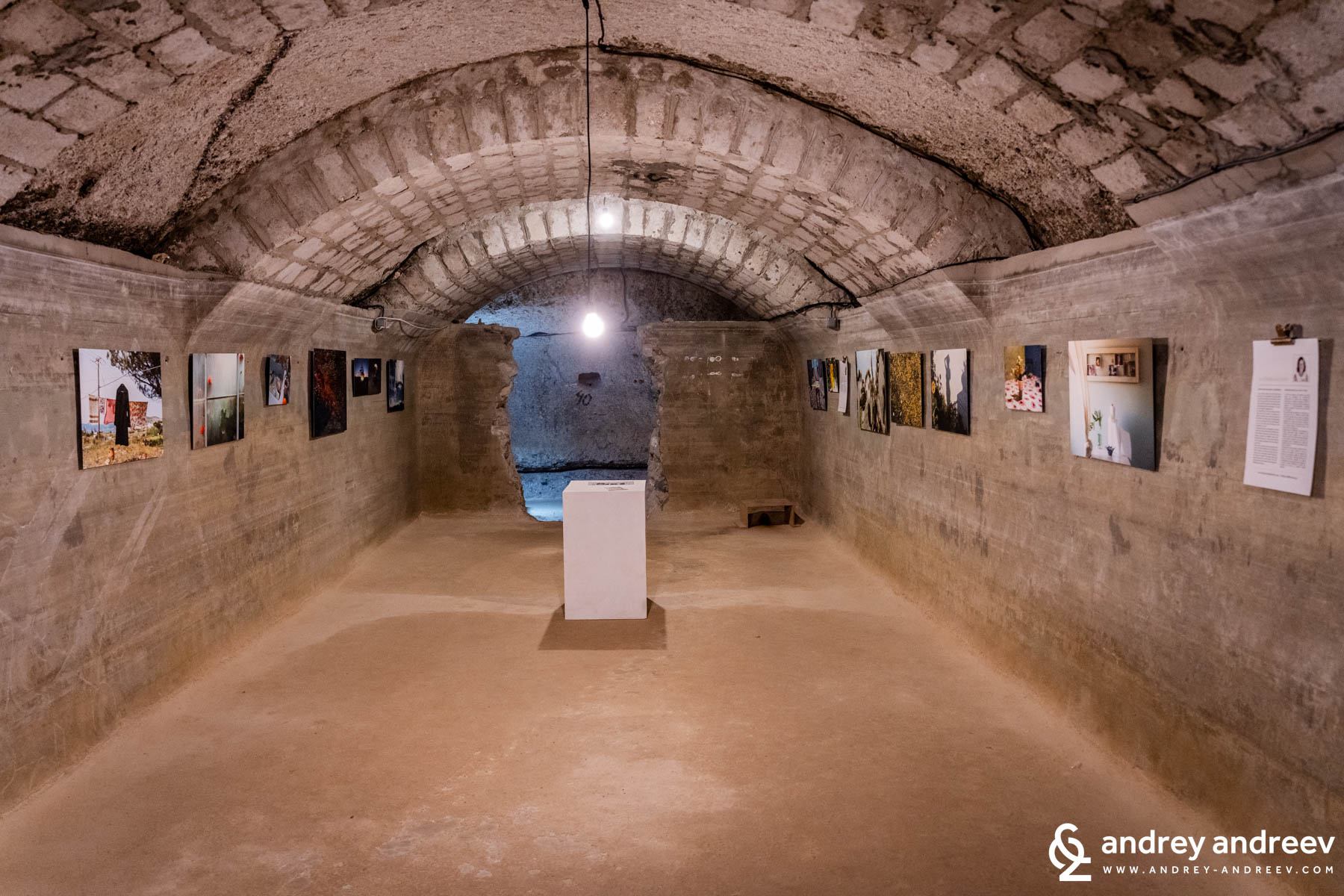
No one knows exactly how many tunnels are in the bomb shelter. It is known, however, that even after the war, local residents used them and even built several new water tanks on the basis of the already existing structure. It’s both interesting and… well, a little scary when you think about those times. But the children were also curious to take this walk through history.
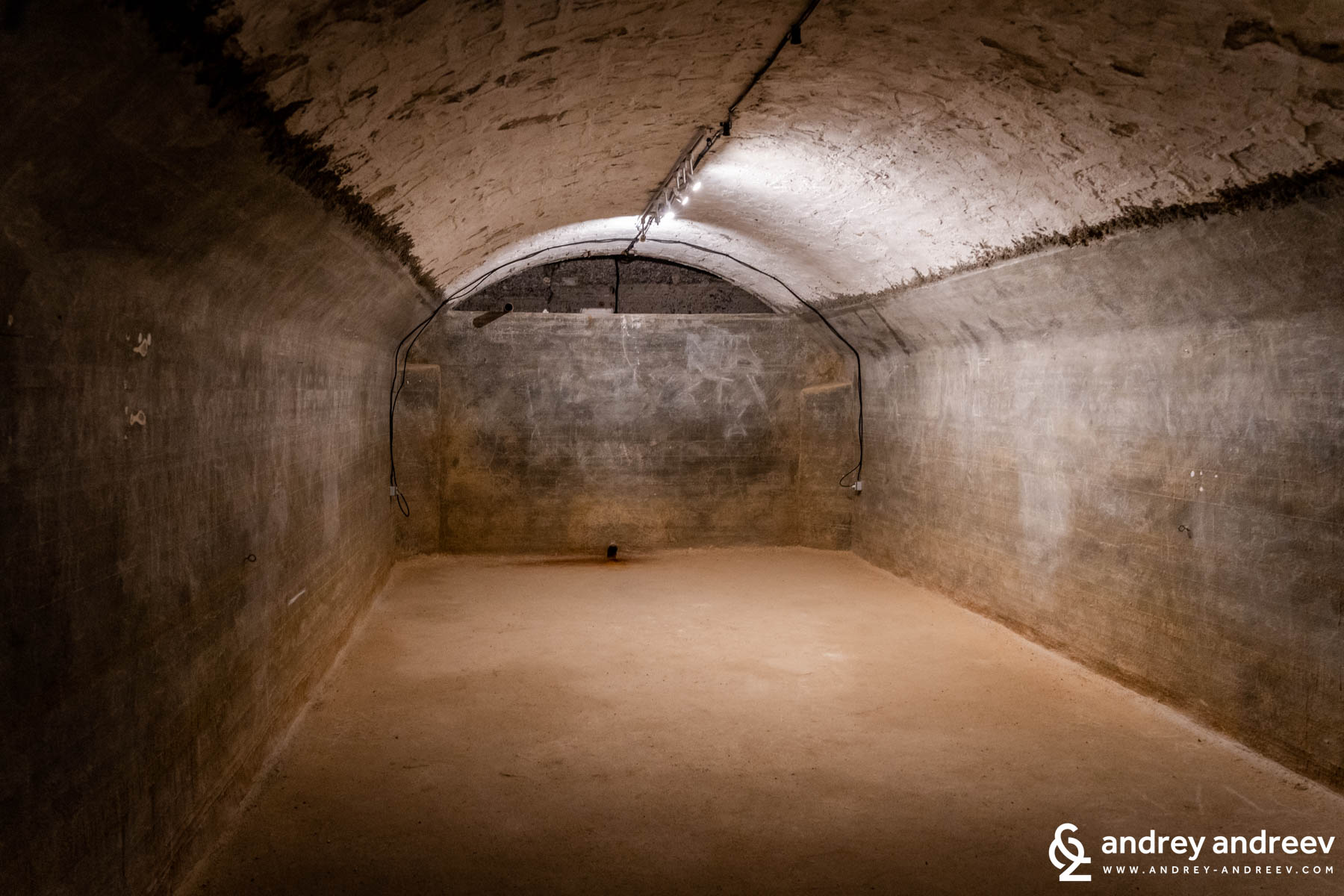
Sunset over Milos
Our ship left just at sunset, giving us one of the most beautiful experiences of the entire cruise. And we are sure that the timing was not accidental at all. As we enjoyed refreshing drinks on the deck, the rose-golden sky slowly descended over the island and we slowly drifted away.
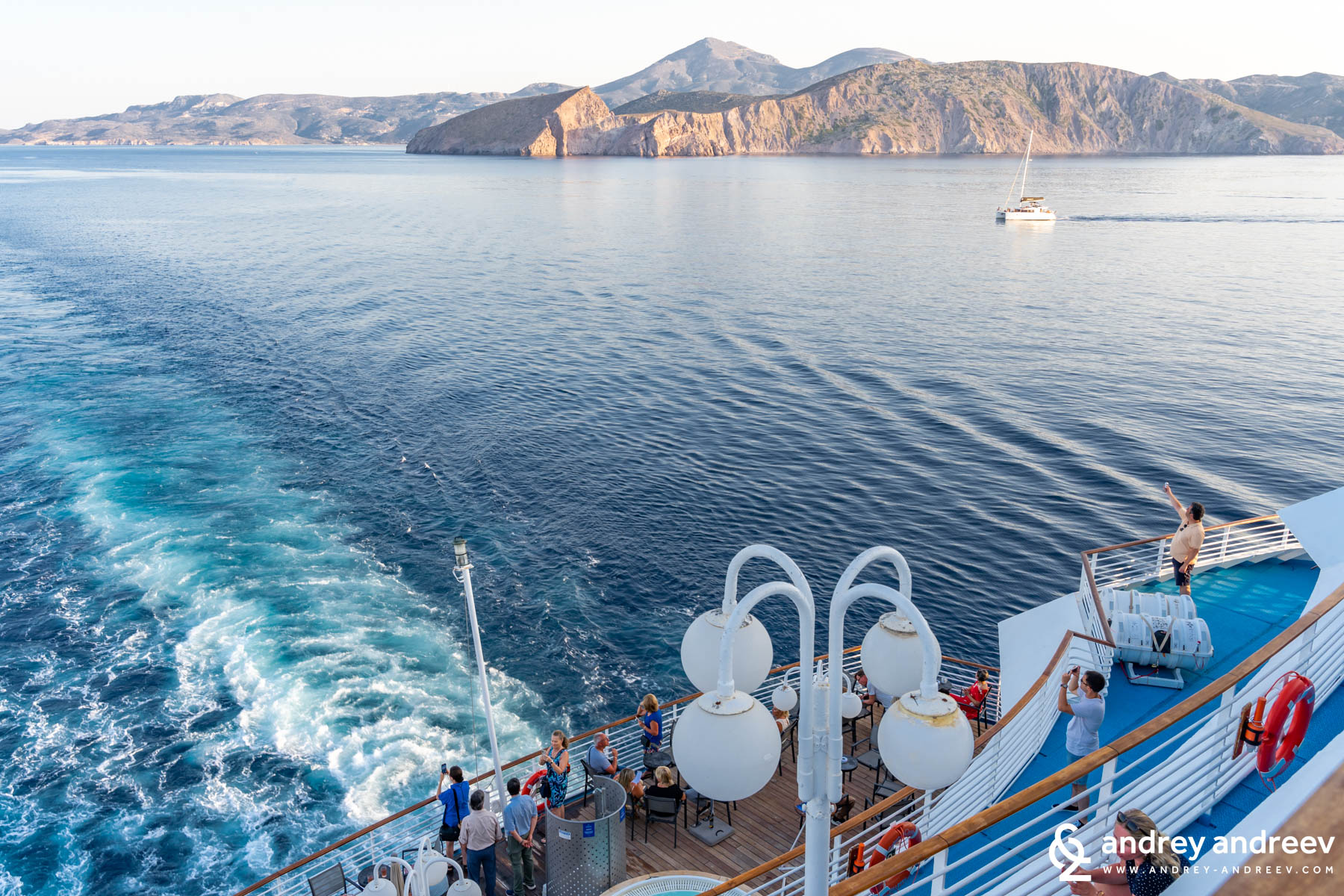
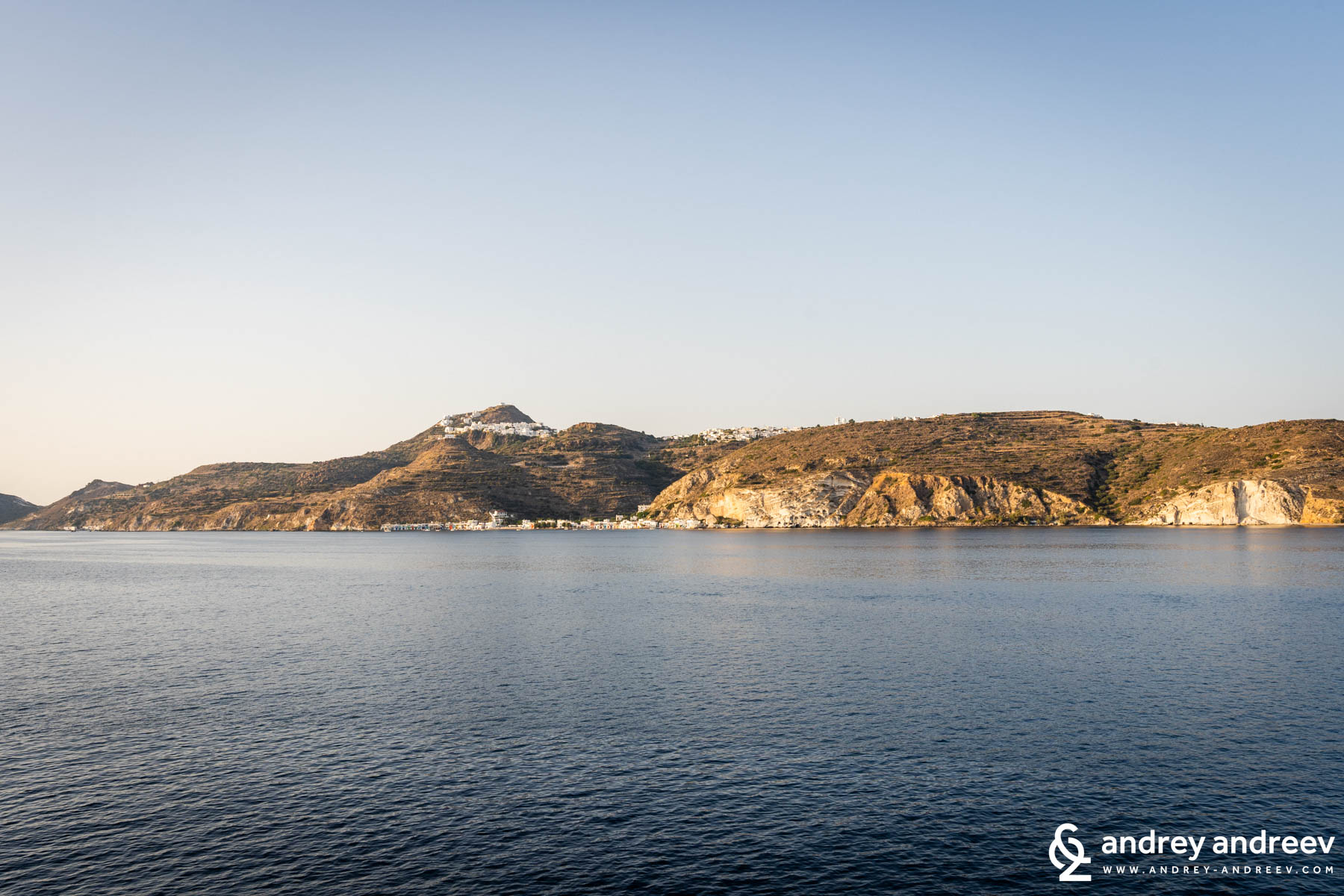
We could not take our eyes off the white villages perched on the hills of Milos to our left, and the wild western half of the island, where there is no asphalt and people are rare visitors. The area is under the protection of Natura 2000 and is the habitat of some protected species such as the Mediterranean monk seal, a rare native red snake, numerous birds, trees, wild flowers and herbs. It is this sight, which most quickly sinks into darkness, that reminds us how well Milos actually hides its secrets.

How to get to Milos Island?
As already mentioned, we got to Milos in a rather easy and pleasant way – with the Idyllic Aegean cruise of the Celestyal Cruises company. Our cruise started from Thessaloniki, was 7 days long and took us to Kusadasi, Crete, Mykonos, Santorini, Milos and Athens. We really liked the itinerary because we had one full day at each destination and traveled at night. This cruise is also suitable for a family trip with children because it is not too busy. See our article “Cruising with Kids” .
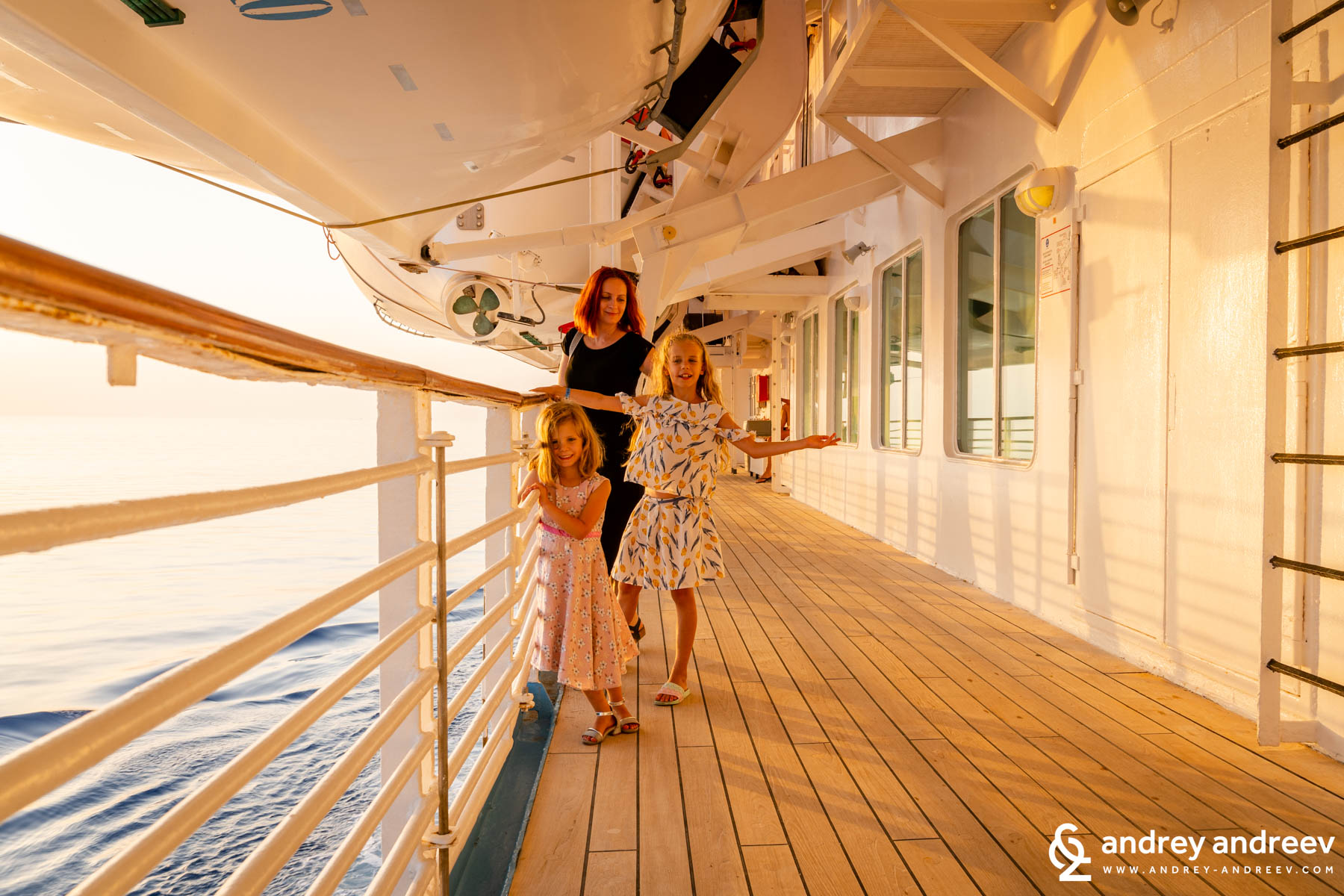
Here, however, we must clarify that getting to Milos by cruise is rare because the island does not have a large port and is generally less busy. But Celestyal Cruises are experts at offering a truly authentic experience beyond the world-famous destinations, and somehow they’ve even made it to Milos.
The other options to visit the island are by ferry or small plane. The local airport is small but has regular flights to Athens. Ferries also run daily.

The island of Milos today is one of the more peaceful Greek islands. Its entire western half is uninhabited and difficult to access, a nature reserve. There are not many tourists here even in July.
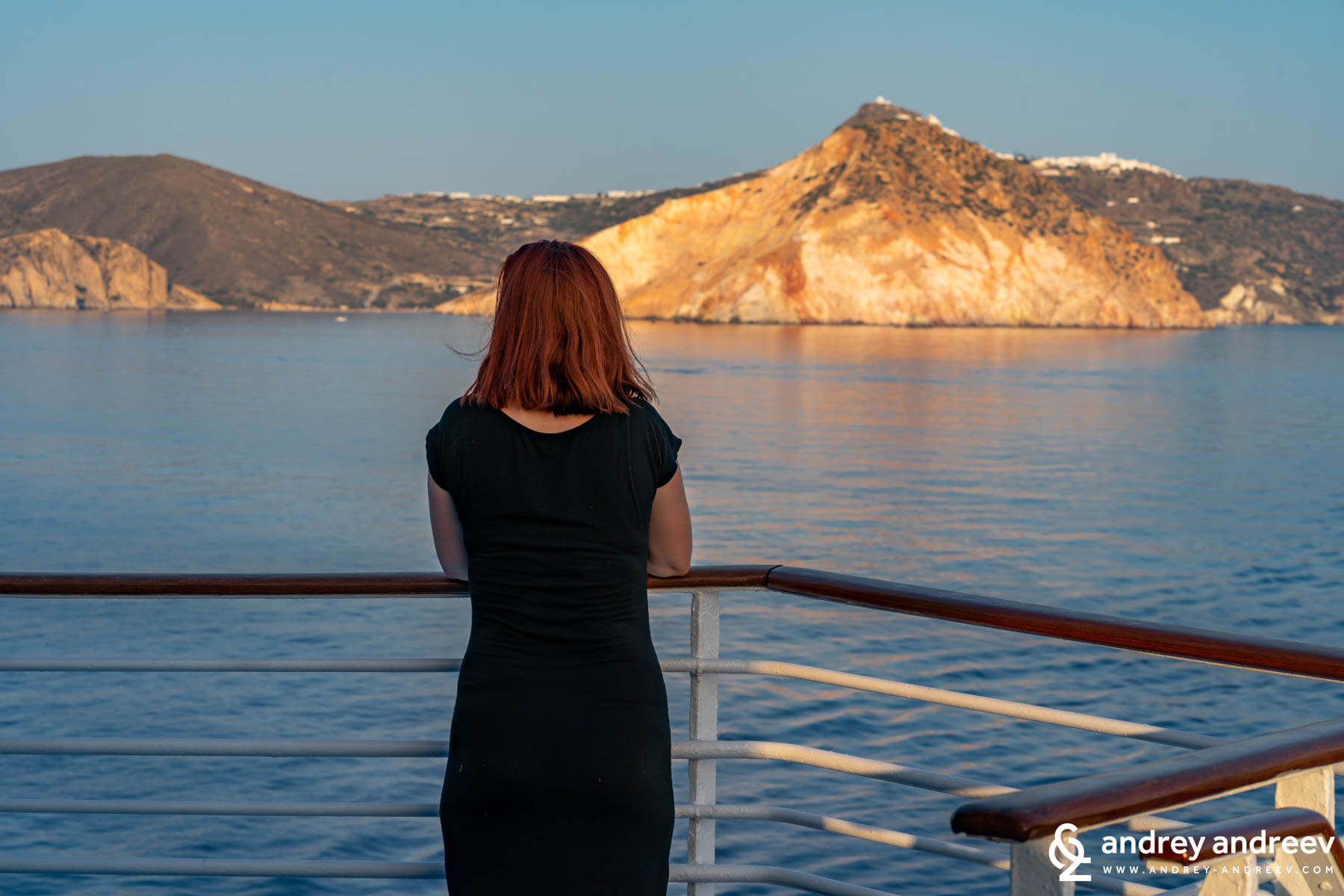
Follow us: Instagram and Facebook
